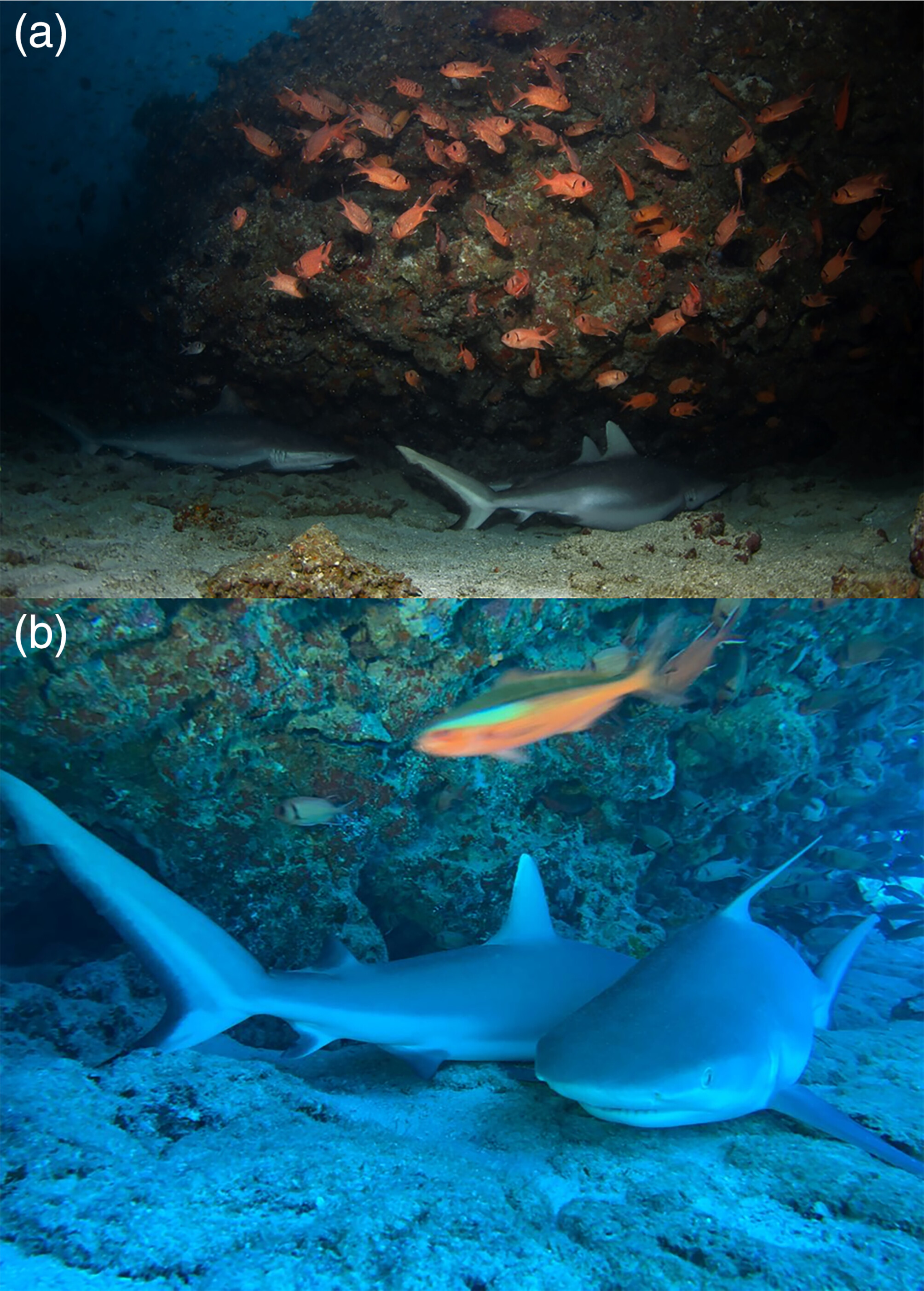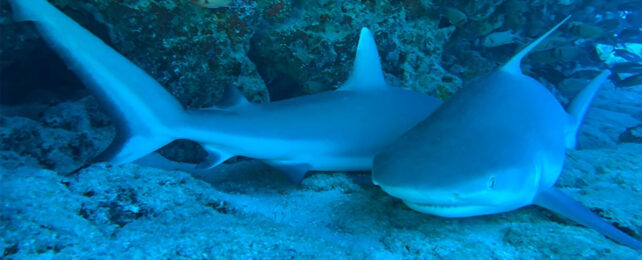You might have heard that all sharks – if not all fish – must keep moving to maintain the constant flow of water and oxygen across their gills.
While most fishes can actually stop for a break, opening and closing their mouth to keep the water flowing, a few species really do need to keep on keeping on. These are called obligate ram ventilators. Unlike their more sedentary cousins, they cannot use their mouth to pump water through their gills while at rest.
Biologists thought the gray reef shark (Carcharhinus amblyrhynchos) was one of them. But during routine surveys by divers from Save Our Seas, these sharks were caught napping on the seafloor in the shelter of the rocky, overhanging reef ledges that surround islands in the Seychelles.
If the gray reef sharks were obligate ram ventilators, this napping behavior would be fatal, especially since there was almost no current moving the water during some of the observations.
While the sharks were otherwise motionless, the divers noticed their lower jaws rising and falling in the same way that species who use buccal pumping – that opening and closing movement – to 'breathe' while at rest.
Filmmaker Craig Foster, best known for his 2020 documentary My Octopus Teacher, was one of those divers, and an author of the paper reporting the sightings.
"There is something very special," he says, "about 'tiptoeing' around underwater at a depth of 25 meters and looking into the open eyes of sleeping sharks, moving carefully so as not to wake the peaceful beauties."
"I love things that challenge our current thinking, and I've always thought of the gray reef shark as a clear example of a species that needs to swim to breathe. Clearly not from this discovery."
The paper reports sleeping gray reef sharks sighted in two different locations. The first sighting in September 2022 was of three sharks (at least one female), napping together.
The fact that the three sharks were facing different directions was a big hint that they might be breathing via buccal pumping; if they were relying on a current, they would all be facing the same direction.
On return visits to this site in April 2023, the divers saw anywhere between one and four sharks resting in this submarine daybed.
The team also reports a sighting made by marine photographer Luke Saddler in early 2023 in a different location, who used an iPhone 13 to record a shark taking a solo nap beneath a large head of coral.
In all these observations, the divers stayed up to 5 meters (16 feet) away from the sharks to minimize disturbance, spending 15 to 40 minutes nearby. The sharks snoozed on, presumably none the wiser, as the divers observed their pulsing jaws and occasional movements of their always-open eyes (dreaming shark dreams of submarine sheep, perhaps).
Lead author and marine biologist Robert Bullock, who is head of research at the Save Our Seas D'Arros Research Centre in Seychelles, says this is not something they thought was possible for gray reef sharks.
"On routine survey dives around D'Arros we found gray reef sharks resting under coral reef ledges," Bullock says. "The gray reef shark has been considered a ram-ventilating species, unable to rest, so to find these ones resting turns our fundamental understanding of them on its head."

The shark species is well-studied, and scientists are usually focused on uncovering more subtle things about their biology, physiology, behavior and ecology. Yet an observation like this, Bullock says, is a reminder of just how much we still don't know.
"Conservation is founded on a thorough scientific understanding, so interesting discoveries such as this always have the potential to inform and interact with conservation in the future," he says.
"In this instance in particular, this update to our understanding of how gray reef sharks breathe could help us to better interpret this species' physiological responses to environmental change."
This research is published in Journal of Fish Biology.
